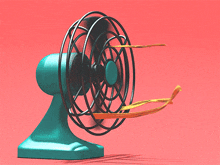The Science Behind Effective Air Circulation and Cooling
Effective air circulation involves complex principles of fluid dynamics and thermodynamics that determine how air moves through spaces and interacts with surfaces. Understanding these principles is crucial for selecting the right fan configuration and placement to achieve optimal comfort and energy efficiency.
Air circulation patterns created by fans influence temperature distribution, humidity control, and air quality throughout indoor environments. Strategic fan placement can eliminate hot spots, reduce temperature stratification, and improve overall thermal comfort. The relationship between fan speed, blade pitch, and room geometry determines the effectiveness of air movement and cooling sensation experienced by occupants.
Modern computational models help predict airflow patterns and optimize fan performance for specific applications. These models consider factors such as room dimensions, obstacle placement, heat sources, and ventilation requirements to recommend ideal fan configurations. This scientific approach ensures maximum cooling efficiency while minimizing energy consumption and noise levels.




